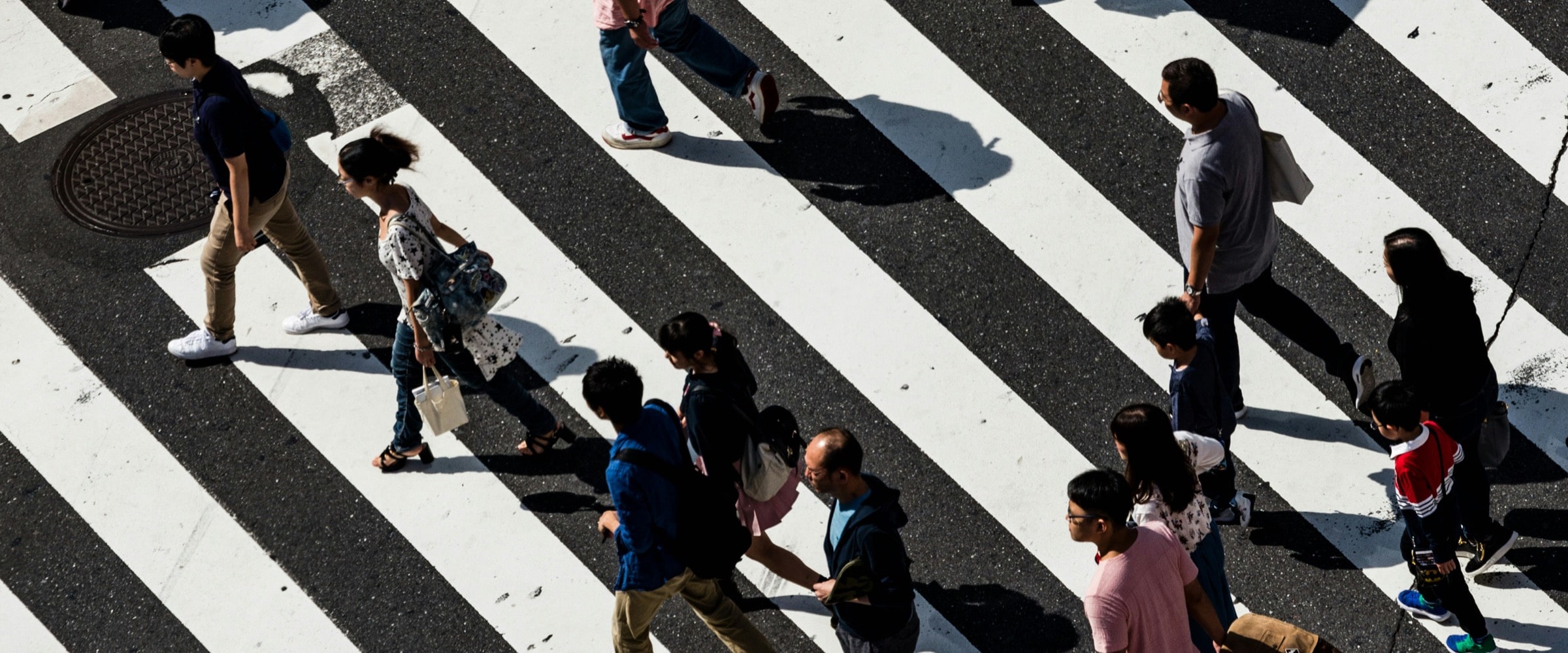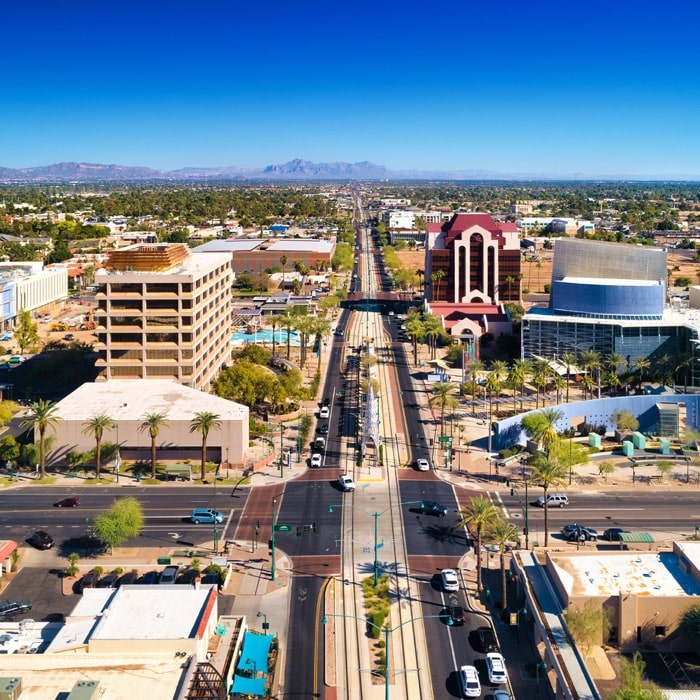
Urban areas, where buildings, roads and infrastructure are highly concentrated and greenery is limited, become “islands” of higher temperatures relative to outlying areas.
Dense downtown corridors with little access to greenery are typically hit the hardest. The dimensions and spacing of buildings in our cities can impact their ability to absorb and release solar energy and natural wind flow.
Often, heat islands build throughout the day and become more pronounced after sunset due to the slow release of heat from urban materials.
Global temperatures have increased faster in the past 50 years than at any time in the past 2,000 years–at minimum. The more global temperatures rise, the greater the heat island impact.
By 2050, close to 1,000 cities will endure summer high temperatures of 95°F (that’s 35°C for non-Americans). That’s nearly triple the temperatures of today.
Heat islands can pose serious risks to our health – increasing the chance of heatstroke, dehydration and exhaustion in office workers and city dwellers.
They place strain on both HVAC systems, as well as landlord and tenant bottom lines. Electricity demand for air conditioning increases by 1-9% for every 2°F in temperature – meaning bigger bills and an increased chance of blackouts due to overloaded power grids.
Productivity plummets. A recent NYT story reported that heat exposure is responsible for more than 2.5 billion hours of lost productivity, and is projected to cost the U.S. economy more than $500 billion annually by 2050.
High temperatures of roofs and walkways can heat up rainwater runoff, which flows into waterways. Raised water temperature impairs water quality and negatively impacts our ecosystem and aquatic life.
It doesn’t have to be too hot to handle! Solutions are already available at every stage of the real estate lifecycle, but it will take collaboration and coordination from all of us to make a change for the better.
So here’s the cool part. These passive design solutions help buildings (and the people who use them) literally “chill out”, and can lower energy consumption by up to 70%.
Reflective building materials
Did you know that white roofing can lower indoor temperatures by up to 9°F (5°C)?
Airflow-centric design
You can lower indoor temperatures by designing openings that encourage cooling airflow.
Green walls
Cover your walls in foliage! Plants absorb heat and convert it into vapour, cooling the space beneath it.
Cool roofs
They provide shade, remove heat from the air and reduce heat absorption and so therefore the temperature of the roof surface.
Shading and cool pavement
Using reflective materials on the pavements, and planting trees around your building not only keeps things cool, but ultimately makes it a better environment for people, increases urban biodiversity and prevents weather- related building damage.
A million trees for Mesa, Arizona
In support of the City of Mesa’s Climate Action Plan, the Mayor of Mesa developed an initiative to plant one million trees by 2050. It is just one of many sustainable practices the city is implementing to help combat the effects of climate change. As Mesa Mayor John Giles says, “trees are cool.”
On June 19, 2023, Phoenix, Arizona recorded its highest-ever average temperature - 108°F. Almost 2 degrees higher than the previous record and one of a growing number of examples of the urban heat island effect at work.
“Any meaningful climate action plan in Mesa, Arizona must address heat mitigation, and trees have a significant role to play in providing shade, keeping temperatures low, and filtering greenhouse gas emissions,” said Mesa Mayor John Giles.
The collaborative tree planting program calls to residents, businesses and community groups to get involved to help solve this problem for future generations. To keep the town on track, the city has provided a ‘heat’ map showing priority areas for and a tracker to keep a running tally on the way to one million.

Read all about how Mesa is fighting the effects of climate change, and how your city can create it own plan for climate action in our Drivers of Change thought piece, Summer in the (resilient) city.
